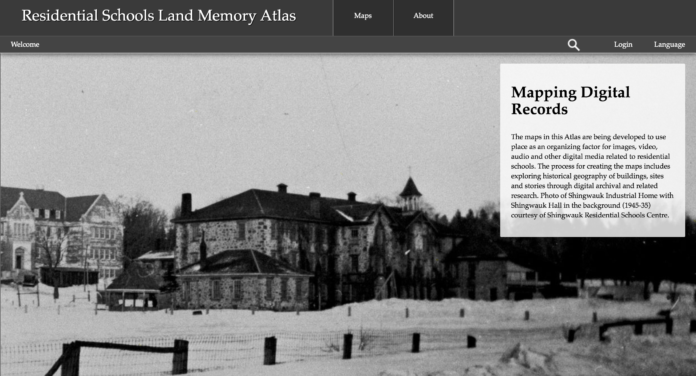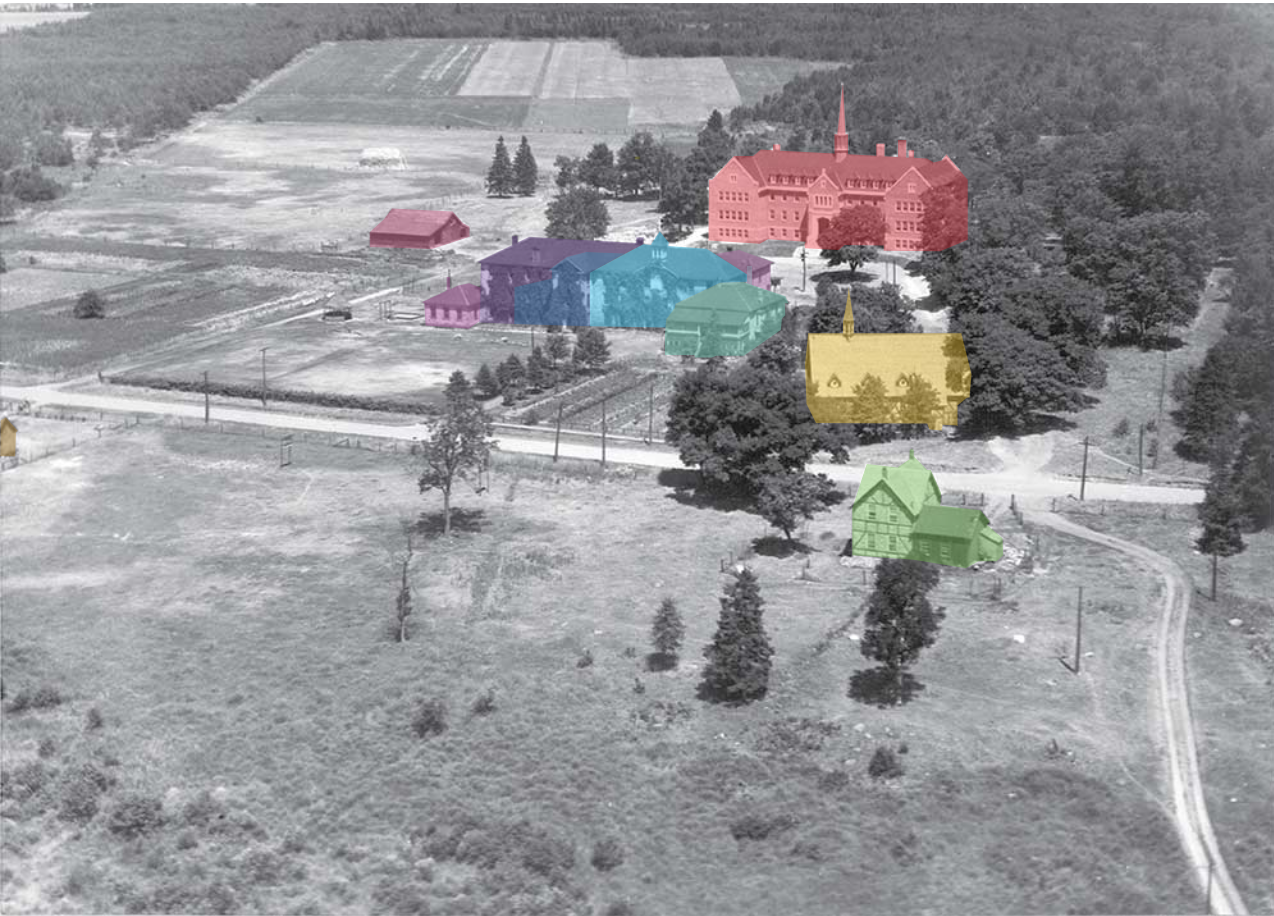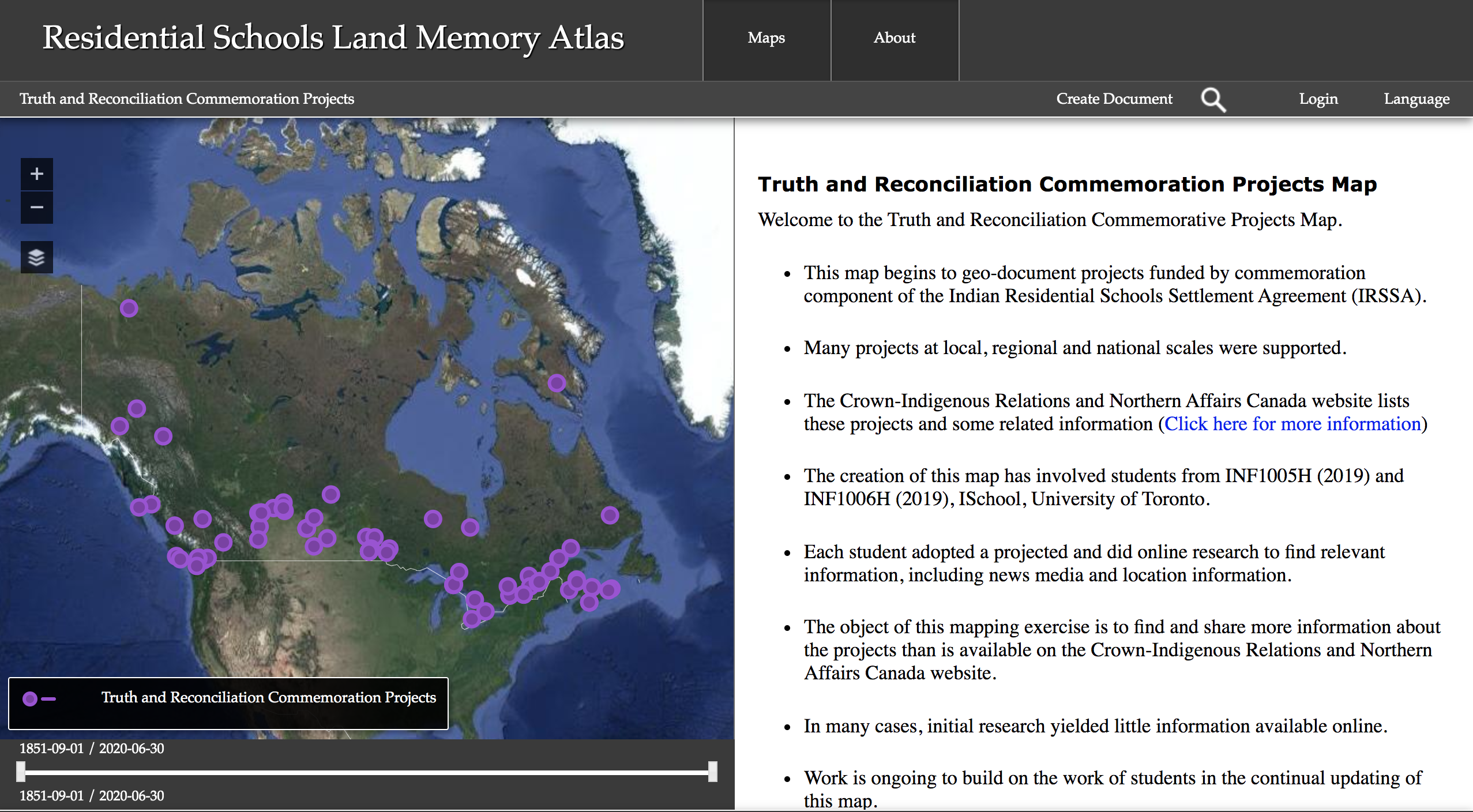
Launched by Carleton’s Geomatics and Cartographic Research Centre (GCRC) on June 21—National Indigenous People’s Day—the Residential Schools Land Memory Atlas (RSLMA) mapping project identifies residential schools from across the country. Alongside maps, the atlas documents any knowledge relating to these schools such as the stories and perspectives of survivors.
The atlas was a collaborative project five years in the making created by students and researchers from Carleton, the University of Manitoba, Algoma University, Concordia University, among others. It furthers researchers’ understanding of the impact of the residential school system on the history of Indigenous peoples in Canada.
Cybercartography
The RLSMA is unique in that it is based on cybercartography, a concept first introduced by Carleton’s research professor and director of the GCRC, Fraser Taylor, in 1997.
According to Taylor, “cybercartography” combines two terms: “cyber,” which refers to an online, digital space, and “cartography” which is used to describe traditional mapping.
What makes the RSLMA a cybercartographic atlas is that it combines traditional mapping based on location with digital information and multimedia elements. Some of its components include visual sketch maps created by students that document the stories of survivors and a map based on an essay titled “I Have a Right to be Heard” by Iroquois photographer and curator Jeff Thomas.
“The project looks at a number of residential schools in Canada, looks at their history and background, looks at the stories of survivors, and more importantly portrays their stories in innovative new forms,” Taylor said.
These new forms include interactive video, where survivors’ stories are recorded and then shown using maps.
“Interactive video is very important,” Taylor added. “For example, the students at the University of Toronto and at Carleton enrolled in courses related to the project looked at the stories that residential school survivors were expressing, and then created a series of maps and vignettes from those stories.”
For Jackie Fletcher, a contributor to the atlas who attended the Shingwauk Residential School from 1959-1964, the multimedia elements in the atlas are a more interactive way of sharing Indigenous history with people.
“This [map] in particular is a tour down the residential school path which may appeal to people rather than the written word,” she said. “It’s an interactive process that people might get more excited to get involved in.”

While the atlas combines traditional mapping with new technology, Taylor said what makes it human are the stories of survivors like Fletcher.
Fletcher added that the atlas is a way of reversing some erasure of Indigenous history and culture, both of which immensely value the process of storytelling.
“It is important to hear actual accounts from survivors because that is how we as Aboriginal people keep our history going through storytelling. This process was deleted from our way of life,” she said.
Fletcher reflected that the erasure of oral history had kept her in the dark about what her family had survived.
“My father had eight siblings, and I had 11 siblings from a blended family. They all went to residential school, but when my younger sister and I went we knew nothing about the institution. It was a well-kept unspoken secret that was embedded in the minds of survivors all in the name of assimilation.”
According to Stephanie Pyne, the lead researcher for the project, many of the stories of survivors that are a part of the atlas were retrieved from the archives of other collections. The researchers decided to reuse some of this material to bring back some stories from the past that remain a relevant part of our understanding of Indigenous history today.
“We’re not going out ourselves and interviewing survivors, but something that needed to be done was map them as a way of highlighting them and bringing them back to people as a portal,” she said.
Truth and reconciliation
Pyne said that while the mapping project addresses some of the calls to action made by the Truth and Reconciliation Commission of Canada—a Federal report highlighting areas of need for reconciliation after residential schools—the atlas was not inspired by it. Much of the proposal and research was done prior to the final report. The atlas is “consistent with the calls to action,” and has continued in response to them, she said.
According to Fletcher, the atlas also furthers the conversation on truth and reconciliation because it shares the experiences of residential school survivors as told by the survivors themselves.
“We need our history to be told from our perspective as to why residential schools were set up, how we were treated, what was taken away from us—the people, and what effects were felt not only by the students, but families left at home with no children,” she said.
“The actual interviews are truth coming from survivors, and not others telling half-truths of the residential school atrocities.”

The project may have come to completion, but Taylor said there is more work to do. As a result of the atlas’ completion, researchers and students at the GCRC are looking into reconstructing the sites of certain residential schools that have long disappeared.
“We’re reconstructing them from the ground up and that’s where the land memory part comes in,” he added.
For Fletcher, the future of the atlas is having people actually use it. She said she hopes these stories and the atlas become a part of a degree program someday, and perhaps even a mandatory part of the orientation to Algoma University. She added that she hopes settlers and outsiders use this information to further their understanding not only of the residential school system but its legacy in Indigenous history as well as Canadian history.
“It can’t be all for nothing. People need to know how we’ve been treated since the beginning of contact if they really want to know Canada’s dark side,” she said. “This mapping is an account of much of what we’ve been through, and as a resource can’t be swept under the rug.”
Featured image from residentialschoolsatlas.org.





